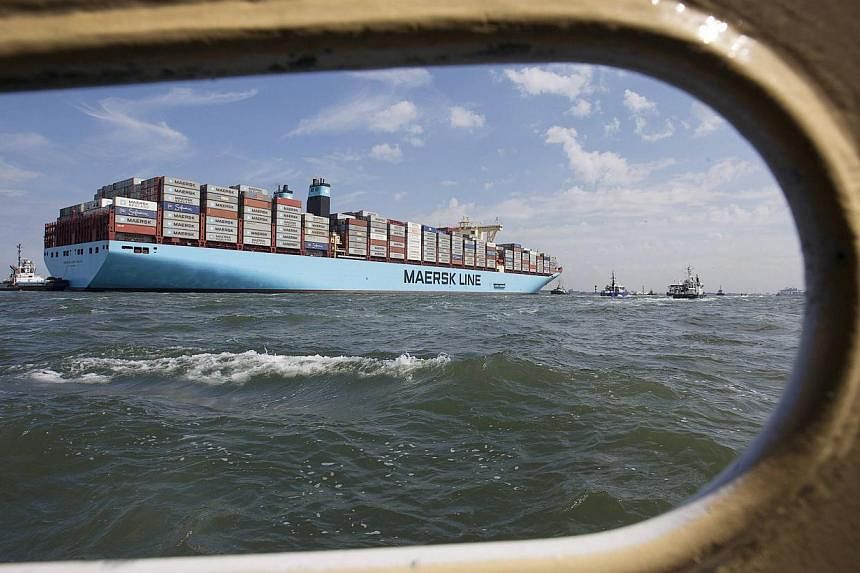As a major global shipping hub, Singapore has a critical interest in future maritime trade patterns.
Of particular interest is the opening of Arctic shipping lanes, particularly Russia's Northern Sea Route (NSR), which runs across the top of Siberia and provides the shortest route between Europe and Asia.
According to some analysts, the NSR will, in the long run, divert traffic away from Singapore. However, the sharp decline in commercial traffic along the NSR last year suggests that Singapore should not worry too much.
The NSR stretches 4,828km from the Barents Sea to the Pacific Ocean. Rapid ice melt caused by climate change has created longer navigational seasons during the summer months, enabling ships to reduce sailing times between Europe and Asia by 30 per cent to 40 per cent.
Revitalising this Stalin-era trade route has been a key element in Russian President Vladimir Putin's ambitions to economically develop the country's vast Arctic regions and restore its superpower status. Moscow, which levies transit fees on ships using the route, envisages the NSR as a major artery of world trade, along which Asian countries can send their manufactured goods to Europe, while Russia transports oil, gas and minerals in the other direction to the resource-hungry economies of China, Japan and South Korea.
A recent growth spurt in maritime traffic using the NSR buoyed Moscow's hopes. In 2013, 71 vessels transited the route, up from 46 in 2012 and just four in 2010. Optimists predicted that global warming would create ice-free seas for up to four months a year, leading to a spectacular linear growth in shipping.
Last year, those rosy predictions suffered a sobering corrective. Although the Russians issued over 600 transit visas, only 53 vessels used the NSR. Some reports suggested that only about 279,400 tonnes of goods were conveyed along the route, 80 per cent less than in 2013, and a far cry from the peak of 7.1 million tonnes in 1987 during Soviet times. Most strikingly, not a single ship sailed between a European port and an Asian port; every single journey was from one Russian port to another.
The 25 per cent fall in commercial traffic - from 71 ships in 2013 to 53 in 2014 - can be explained by two factors.
First, plunging oil prices have made Arctic energy resources too costly to extract, while Western sanctions on Russia have deprived its energy majors of investment funds and the technology needed to exploit Arctic crude. As a result, fewer ships were needed to transport commodities on the NSR.
Second, while the retreat of sea ice has created open seas during the summer, ice is always present. Last year, dangerous ice floes on the NSR posed a serious navigational hazard to ships, forcing shipping companies to cancel plans to sail between Europe and Asia via Russia in favour of more traditional, but longer, routes such as the Strait of Malacca (through which 72,657 ships transited last year).
More sober-minded analysts were never taken in by the hype over Arctic shipping, and last year's fall in traffic only confirmed their misgivings about the viability of the NSR, at least in the short to medium term.
Refurbishing the NSR's dilapidated Soviet-era physical infrastructure, and bringing navigational, meteorological and search and rescue services up to international standards, will require massive funding. Due to worsening economic conditions caused by the twin collapse of oil prices and its currency, Moscow simply does not have that kind of money.
Instead, it has looked to Asian investors but, so far, they have yet to step up to the financial plate. Even China, Russia's closest partner in Asia, seems to have lost its enthusiasm for the NSR, and instead is actively promoting its multi-billion-dollar 21st century Maritime Silk Road, an initiative to strengthen infrastructure on existing shipping routes in South-east and South Asia.
Potential investors from Asia have also been put off by the route's unsuitability for container ships. Due to geographical constraints, the NSR cannot handle the world's largest container ships, while harsh and unpredictable weather conditions disrupt schedule reliability on which shipping companies depend for their profits.
Unlike the Suez Canal-Malacca Strait route, there are far fewer opportunities to offload and take on cargo at ports along the way, further reducing profit margins.
Shippers must also factor in additional costs, such as making vessels ice-worthy, providing crews with proper training and paying the Russians for mandatory ice-breaker escort services.
All of this means that while the NSR may provide shorter journey times, the cost per container could actually be higher than when using longer routes.
Can the NSR's fortunes be turned around? Possibly yes.
Scientists are tentatively predicting quicker summer ice melt this year because of warmer air temperatures and higher pressure over the Arctic Ocean. Shipping numbers could well exceed the 2013 record. But weather conditions will remain unpredictable, and the long-term future of the NSR still depends on the commercial viability of Arctic energy resources and foreign investment.
In short, it may take decades before the NSR even begins to complement existing trade routes, let alone rival them.
The writer is a senior fellow at the Institute of Southeast Asian Studies, Singapore.

